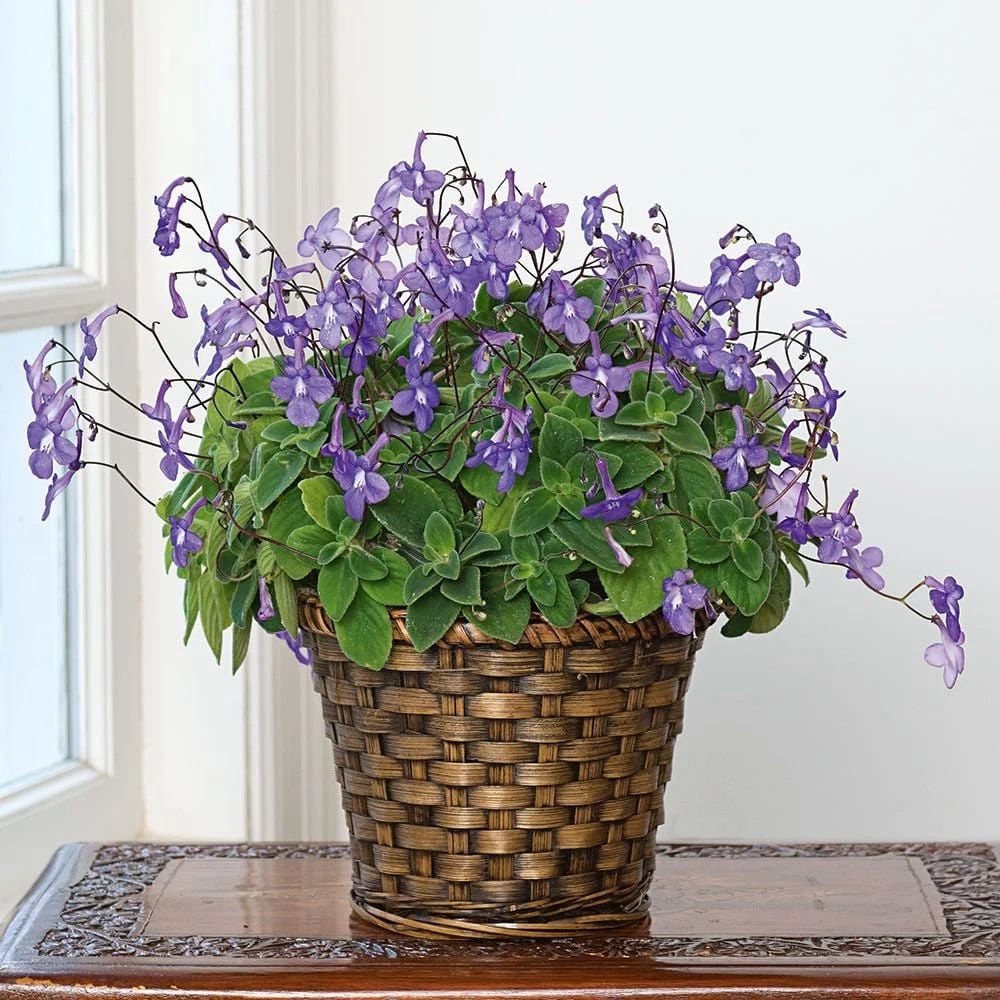Introduction to Violet Primrose
The violet primrose is a delightful early-blooming perennial belonging to the Primula genus, which includes over 500 species. Known for their cheerful blossoms and delicate foliage, primroses are a favorite among gardeners seeking to add a splash of color to the spring garden. The violet variety, in particular, enchants with its velvety purple to deep lilac blooms and yellow centers, offering a striking contrast against the bright greens of spring.
Primroses symbolize youth, renewal, and new beginnings, making them perfect for spring displays. Despite their dainty appearance, they are surprisingly hardy and easy to care for, provided they are planted in suitable conditions and given the proper attention.
1. Planting and Location
Choosing the Right Spot
Violet primroses thrive best in cool, shaded environments that mimic their natural woodland habitat. They prefer dappled sunlight or light shade, making them ideal for areas under deciduous trees or along north-facing garden borders.
- Sunlight: Partial shade to filtered sunlight is ideal. Too much direct sun, especially in hot climates, can cause the delicate leaves to scorch and the flowers to wilt quickly. In cooler climates, primroses may tolerate more sun, but midday shade is still recommended.
- Soil Conditions: These plants prefer moist, well-draining soil that is rich in organic matter. A loamy or humus-rich soil with a neutral to slightly acidic pH (between 6.0 and 7.0) is perfect. If your soil is heavy clay, improve drainage with compost, leaf mold, or well-rotted manure.
When to Plant
- Best planting time: Early spring or fall. Planting in the fall allows roots to establish before winter, leading to stronger spring blooms. For containers, early spring is ideal.
Spacing and Depth
- Spacing: Plant primroses 6–12 inches apart. This allows for good air circulation, which helps prevent disease.
- Depth: Set plants so that the crown (where stems meet roots) is at soil level. Don’t bury them too deep, or they may rot.
2. Watering Needs
Violet primroses love moisture—but not soggy conditions.
- Water Regularly: Keep soil consistently moist, especially during dry spells. In spring, rainfall often suffices, but supplemental watering may be necessary during dry periods in summer or fall.
- Watering Method: Water at the base of the plant, avoiding overhead watering, which can lead to fungal problems like mildew or leaf rot.
- Mulching: Apply a layer of organic mulch (like shredded bark or compost) around the base of the plant to conserve moisture, regulate temperature, and prevent weeds. Just avoid letting the mulch touch the crown directly.
3. Feeding and Fertilization
To keep violet primroses blooming vigorously, proper nutrition is important.
- When to Fertilize: Begin feeding in early spring as new growth emerges. Continue every 4–6 weeks during the growing season.
- Type of Fertilizer: Use a balanced liquid fertilizer (such as 10-10-10) or a bloom-boosting fertilizer (like 5-10-5) diluted to half strength. Avoid over-fertilizing, as this can lead to lush foliage and fewer blooms.
- Organic Alternatives: Compost tea, fish emulsion, or diluted seaweed extract work well for organic gardeners.
4. Pruning and Deadheading
Regular maintenance will keep your violet primrose neat and encourage longer blooming.
- Deadheading: Remove spent flowers by pinching or snipping them off at the base of the stem. This prevents the plant from putting energy into seed production and promotes more blooms.
- Trimming Leaves: In late summer or fall, trim away any yellowing or ragged leaves to keep the plant tidy and healthy.
- Cutting Back in Fall: After the first frost, you can cut the foliage down to about 1 inch above the soil. In mild climates, the foliage may persist through winter.
5. Pests and Diseases
Primroses are generally resilient, but they can still suffer from a few common problems.
Pests:
- Slugs and Snails: These are the most frequent culprits, especially in damp or shaded gardens. Use slug bait, copper tape, or hand-pick them in the early morning.
- Aphids: These small insects may cluster on stems and buds, causing distortion. Use insecticidal soap or a blast of water to remove them.
- Spider Mites and Whiteflies: More common indoors or in greenhouses. Neem oil or insecticidal soap can help control these pests.
Diseases:
- Crown Rot: Usually caused by overly wet conditions. Prevent it by avoiding soggy soil and ensuring good drainage.
- Powdery Mildew: Appears as a white, dusty coating on leaves. Improve air circulation and remove affected leaves. Fungicidal sprays may be necessary.
- Botrytis Blight (Gray Mold): This fungal disease can cause flower and leaf decay, especially in wet conditions. Keep plants spaced properly and water at the base.
6. Overwintering and Cold Weather Care
Violet primroses are typically hardy in USDA zones 3–8, but protection during cold months will ensure vigorous regrowth in spring.
- Mulch for Winter: In late fall, apply a thick mulch (like straw or shredded leaves) around the base to protect roots from frost heaving.
- Containers: If growing in pots, move them to a protected area like a cold frame or unheated garage during winter. Water sparingly—just enough to prevent the soil from drying out completely.
- In Snowy Regions: Snow itself can act as insulation. The biggest danger is freeze-thaw cycles that disturb the roots, so mulching remains essential.
7. Propagation
You can propagate violet primroses easily via division or seed.
- Division: Every 2–3 years in early spring or after flowering, dig up clumps and gently divide them. Replant divisions immediately and water well. This not only multiplies your plants but rejuvenates older clumps.
- Seeds: Collect seeds from mature plants after flowering, or sow store-bought seeds. Start seeds indoors 8–10 weeks before your last frost date. Keep them moist and in a cool location (55–65°F), as primrose seeds need a cold period to germinate.
8. Companion Planting and Landscaping Uses
Violet primroses are versatile and blend beautifully in mixed beds, containers, and shaded borders.
Great Companions:
- Ferns
- Hellebores
- Hostas
- Bleeding Hearts (Dicentra)
- Brunnera
- Pulmonaria (Lungwort)
Garden Uses:
- Borders: Plant along shaded walkways or woodland edges.
- Containers: Combine with other cool-season plants in spring pots.
- Rock Gardens: Compact primroses thrive in sheltered crevices.
- Underplanting: Ideal beneath deciduous trees or shrubs that leaf out later in spring.
Conclusion
Violet primroses are an enchanting addition to any garden, offering early color, charm, and a connection to nature’s gentler side. With their preference for cool, shady spots and consistent moisture, they are relatively low-maintenance once established. Whether planted in borders, containers, or woodland gardens, these little gems reward you with beauty and a touch of magic each spring.
By following the care tips above—choosing the right location, maintaining moisture, feeding thoughtfully, and managing pests—you can enjoy the lush blooms and cheerful presence of violet primroses for years to come.


